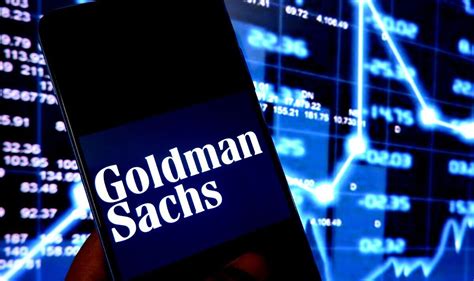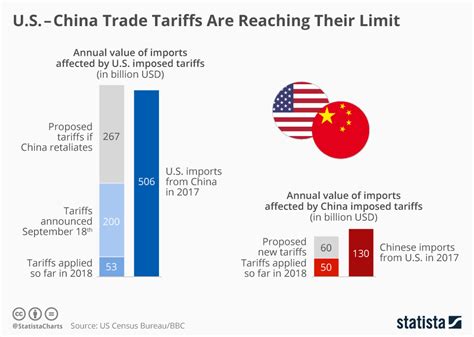
Inflation could deliver more surprises, potentially pushing interest rates higher than currently anticipated, according to a recent analysis by Goldman Sachs. The investment bank suggests investors should brace for unexpected twists in the inflation narrative, cautioning against complacency despite recent moderation in some price pressures.
Goldman Sachs economists are signaling that the battle against inflation may not be as straightforward as recent data might suggest. While acknowledging the progress made in cooling down certain sectors of the economy, they emphasize the possibility of future inflationary shocks that could force the Federal Reserve to maintain or even increase its hawkish monetary policy stance. This outlook contrasts with the more optimistic projections of some market participants who anticipate a swift return to the Fed’s 2% inflation target and subsequent interest rate cuts.
The investment bank’s analysis points to several potential sources of inflationary risk. These include unexpected supply chain disruptions, a resurgence in demand driven by robust consumer spending, and persistent wage pressures. These factors could combine to create a scenario where inflation proves more stubborn than anticipated, requiring a more aggressive response from the Federal Reserve.
“While we have made significant progress in reducing inflation, the possibility of future shocks remains a real concern,” stated a recent Goldman Sachs report. “Investors should be prepared for the potential of higher interest rates and increased market volatility.”
The implications of a potential inflation shock are far-reaching. Higher interest rates could dampen economic growth, impacting corporate earnings and potentially leading to a slowdown in hiring. Furthermore, rising rates could put downward pressure on asset prices, affecting everything from stocks and bonds to real estate.
Goldman Sachs’ warning serves as a reminder that the economic outlook remains uncertain and that investors should exercise caution in their portfolio allocations. The bank recommends diversifying investments and considering strategies that can help mitigate the impact of rising interest rates and inflation.
Digging Deeper into Goldman Sachs’ Inflation Warning
The Goldman Sachs analysis underscores the complexity of the current macroeconomic environment. While inflation has undoubtedly moderated from its peak in 2022, several factors suggest that the fight against rising prices is far from over. To fully grasp the investment bank’s warning, it’s crucial to examine the specific risks they have identified and the potential consequences for the economy and financial markets.
Supply Chain Vulnerabilities:
One of the primary drivers of inflation in recent years has been disruptions to global supply chains. The COVID-19 pandemic, geopolitical tensions, and extreme weather events have all contributed to bottlenecks and shortages, pushing up prices for a wide range of goods and services.
While supply chains have generally improved in recent months, Goldman Sachs cautions that they remain vulnerable to future shocks. For example, renewed lockdowns in China, escalating geopolitical conflicts, or severe weather events could all trigger fresh disruptions, leading to higher prices and renewed inflationary pressures.
Resilient Consumer Demand:
Despite rising interest rates and concerns about a potential recession, consumer spending has remained surprisingly robust. This resilience is partly due to the strong labor market, which has kept unemployment low and wages rising. Additionally, many households accumulated substantial savings during the pandemic, which they are now drawing down to support their spending.
Goldman Sachs warns that this strong consumer demand could fuel further inflation, particularly if supply chains remain constrained. If demand outstrips supply, businesses will be able to raise prices, leading to a renewed acceleration in inflation.
Persistent Wage Pressures:
Another factor contributing to inflation is the tight labor market, which has led to significant wage increases. While rising wages are generally a positive development for workers, they can also contribute to inflation if businesses pass on these higher labor costs to consumers in the form of higher prices.
Goldman Sachs notes that wage pressures remain elevated, particularly in certain sectors of the economy. If wage growth continues to outpace productivity growth, it could lead to a sustained period of higher inflation.
The Federal Reserve’s Response:
The Federal Reserve has been aggressively raising interest rates in an effort to combat inflation. However, the central bank faces a delicate balancing act. Raising rates too quickly could trigger a recession, while raising them too slowly could allow inflation to become entrenched.
Goldman Sachs suggests that the Federal Reserve may need to maintain or even increase its hawkish monetary policy stance if inflation proves more persistent than anticipated. This could mean further interest rate hikes and a slower pace of balance sheet reduction.
Impact on Financial Markets:
A potential inflation shock could have a significant impact on financial markets. Higher interest rates could dampen economic growth, impacting corporate earnings and potentially leading to a slowdown in hiring. Furthermore, rising rates could put downward pressure on asset prices, affecting everything from stocks and bonds to real estate.
Goldman Sachs recommends that investors diversify their portfolios and consider strategies that can help mitigate the impact of rising interest rates and inflation. These strategies could include investing in inflation-protected securities, such as Treasury Inflation-Protected Securities (TIPS), and diversifying into asset classes that tend to perform well in inflationary environments, such as commodities and real estate.
Historical Context and Lessons Learned
To fully appreciate the potential risks associated with a resurgence in inflation, it’s helpful to examine historical episodes of high inflation and the policy responses they elicited. The 1970s, for example, were characterized by a period of stagflation, a combination of high inflation and slow economic growth.
The Federal Reserve, under the leadership of Paul Volcker, responded to this crisis by aggressively raising interest rates, even at the cost of triggering a recession. This policy eventually succeeded in bringing inflation under control, but it also resulted in significant economic hardship.
The lessons learned from the 1970s are that tackling inflation often requires painful measures and that a failure to act decisively can lead to even greater economic problems down the road.
The Counter-Argument: Why Inflation May Not Be a Major Threat
While Goldman Sachs is warning of a potential inflation shock, it’s important to acknowledge that there are also arguments to be made that inflation is likely to continue to moderate.
One argument is that supply chain disruptions are gradually easing, which should help to reduce price pressures. Another argument is that consumer demand is likely to weaken as the impact of stimulus checks fades and as households become more concerned about the economic outlook. Finally, some economists believe that the Federal Reserve has already done enough to bring inflation under control and that further interest rate hikes are unnecessary.
Ultimately, the future path of inflation remains uncertain. However, Goldman Sachs’ warning serves as a valuable reminder that the risks are tilted to the upside and that investors should be prepared for the possibility of unexpected twists in the inflation narrative.
Examining the Underlying Economic Data
A comprehensive understanding of the inflation outlook necessitates a close examination of the underlying economic data. Key indicators to watch include the Consumer Price Index (CPI), the Producer Price Index (PPI), and the Personal Consumption Expenditures (PCE) price index.
The CPI measures the average change over time in the prices paid by urban consumers for a basket of consumer goods and services. The PPI measures the average change over time in the selling prices received by domestic producers for their output. The PCE price index measures the average change in prices for goods and services purchased by persons in the United States.
These indicators provide valuable insights into the various factors that are driving inflation, such as supply chain disruptions, consumer demand, and wage pressures. By closely monitoring these data points, investors can gain a better understanding of the potential risks and opportunities associated with the inflation outlook.
The Role of Government Policy
Government policies can also play a significant role in shaping the inflation outlook. Fiscal policies, such as government spending and taxation, can impact aggregate demand and influence price pressures. Monetary policies, such as interest rate adjustments and quantitative easing, can affect the money supply and influence inflation expectations.
For example, expansionary fiscal policies, such as increased government spending, can stimulate economic growth and potentially lead to higher inflation. Contractionary fiscal policies, such as tax increases, can dampen economic growth and potentially help to reduce inflation.
Similarly, expansionary monetary policies, such as lower interest rates, can stimulate economic activity and potentially lead to higher inflation. Contractionary monetary policies, such as higher interest rates, can slow down economic activity and potentially help to reduce inflation.
Navigating the Uncertainties: Investment Strategies
Given the uncertainties surrounding the inflation outlook, investors should adopt a diversified investment strategy that is designed to mitigate the risks of both higher inflation and slower economic growth.
Some strategies that investors may consider include:
- Investing in Inflation-Protected Securities: Treasury Inflation-Protected Securities (TIPS) are bonds that are indexed to inflation. This means that their principal value increases as inflation rises, providing investors with protection against the erosion of purchasing power.
- Diversifying into Real Assets: Real assets, such as commodities and real estate, tend to perform well in inflationary environments. Commodities, such as oil and gold, are often used as a hedge against inflation. Real estate can also provide a hedge against inflation, as rents tend to rise along with prices.
- Investing in Value Stocks: Value stocks are stocks that are trading at a low price relative to their fundamentals, such as earnings and book value. Value stocks tend to outperform growth stocks in inflationary environments, as they are less sensitive to rising interest rates.
- Maintaining a Cash Cushion: Holding a portion of your portfolio in cash can provide flexibility and allow you to take advantage of investment opportunities that may arise as market conditions change.
The Global Perspective
Inflation is not solely a domestic issue. It is a global phenomenon influenced by international trade, global supply chains, and the monetary policies of other countries. The actions of central banks around the world can have a significant impact on inflation in the United States.
For example, if other countries are experiencing high inflation, this can lead to higher prices for imported goods in the United States. Similarly, if other countries are raising interest rates, this can put upward pressure on interest rates in the United States.
Therefore, it is important to consider the global context when assessing the inflation outlook and making investment decisions.
Conclusion: Vigilance and Preparedness
Goldman Sachs’ warning serves as a timely reminder that the fight against inflation is not yet won and that investors should remain vigilant and prepared for the possibility of unexpected twists. While there are arguments to be made that inflation is likely to continue to moderate, the risks are tilted to the upside, and investors should adopt a diversified investment strategy that is designed to mitigate the risks of both higher inflation and slower economic growth.
By closely monitoring economic data, understanding the role of government policy, and considering the global perspective, investors can navigate the uncertainties surrounding the inflation outlook and make informed investment decisions. The key is to stay informed, remain flexible, and be prepared to adjust your portfolio as market conditions change. The possibility of an inflation shock is not a certainty, but it is a risk that investors should take seriously and plan for accordingly.
Frequently Asked Questions (FAQ)
1. What is the main point of Goldman Sachs’ recent analysis on inflation?
Goldman Sachs is cautioning investors to prepare for potential “inflation shocks” that could lead to higher-than-expected interest rates. They suggest that despite recent moderation in some areas, the fight against inflation may not be over and unexpected events could reignite price pressures.
2. What are some of the potential sources of inflationary risk identified by Goldman Sachs?
Goldman Sachs points to potential supply chain disruptions, strong consumer demand, and persistent wage pressures as key factors that could contribute to future inflationary shocks. These factors could lead to inflation proving more stubborn than anticipated.
3. How might higher interest rates, potentially triggered by an inflation shock, impact the economy and financial markets?
Higher interest rates could dampen economic growth, negatively affect corporate earnings, and potentially lead to a slowdown in hiring. They could also put downward pressure on asset prices, affecting stocks, bonds, and real estate.
4. What investment strategies does Goldman Sachs recommend to mitigate the impact of rising interest rates and inflation?
Goldman Sachs recommends diversifying investments and considering strategies that can help mitigate the impact of rising interest rates and inflation. This may include investing in inflation-protected securities like TIPS, diversifying into asset classes like commodities and real estate, and maintaining a cash cushion.
5. What is the significance of the Federal Reserve’s role in managing inflation, according to Goldman Sachs’ analysis?
Goldman Sachs suggests the Federal Reserve may need to maintain or even increase its hawkish monetary policy stance if inflation proves more persistent than anticipated. This could mean further interest rate hikes and a slower pace of balance sheet reduction, highlighting the Fed’s crucial role in controlling inflation.









